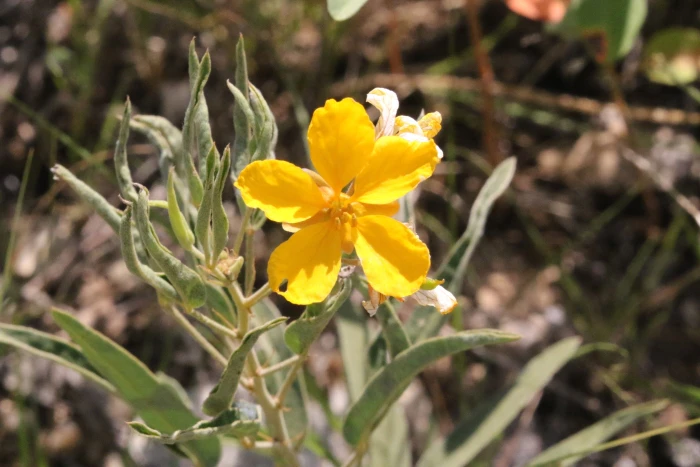Twoleaf Senna
(Senna roemeriana)
Twoleaf Senna (Senna roemeriana)
/
/

Brooke Smith
CC BY 4.0
Image By:
Brooke Smith
Recorded By:
Copyright:
CC BY 4.0
Copyright Notice:
Photo by: Brooke Smith | License Type: CC BY 4.0 | License URL: http://creativecommons.org/licenses/by/4.0/ | Rights Holder: Brooke Smith | Publisher: iNaturalist | Date Created: 2020-06-13T22:50:35-07:00 |



















































Estimated Native Range
Climate Requirements for Coral Terrace, Florida
| This Plant | Your Site | Plant Suitability for Your Location | ||
|---|---|---|---|---|
| • Precipitation | 9" - 38" | 59" | Aquatic | Aquatic |
| • High Temp. | 81°F - 99°F | 90°F | Your summer temperatures are normal for this plant. | Excellent |
| • Low Temp. | 19°F - 46°F | 60°F | OK, but your winter temperatures are warmer than normal for this plant | OK |
This plant may not grow well at your location - your precipitation is too high.
Summary
Senna roemeriana, commonly known as Twoleaf Senna, is a deciduous perennial herb native to Texas and northern Mexico, where it thrives in open grasslands, prairies, and desert scrub environments. It typically grows to a height of 1-2 feet (0.3-0.6 meters) and a width of 2-5 feet (0.6-1.5 meters), often forming a rounded shape. The plant features compound leaves with two leaflets and bears bright yellow, pea-like flowers from late spring to early fall, which are moderately showy and attract pollinators.
Twoleaf Senna is valued for its drought tolerance and ability to adapt to poor soils, making it a suitable choice for xeriscaping and naturalized areas. It is often used in rock gardens, as a ground cover, or in borders for its low maintenance and attractive foliage. This plant prefers full sun to part shade and requires well-drained soils. While generally pest-free, it can occasionally suffer from root rot if overwatered. Twoleaf Senna is also recognized for its potential medicinal properties, although it should be used with caution as some parts can be toxic if ingested.CC BY-SA 4.0
Twoleaf Senna is valued for its drought tolerance and ability to adapt to poor soils, making it a suitable choice for xeriscaping and naturalized areas. It is often used in rock gardens, as a ground cover, or in borders for its low maintenance and attractive foliage. This plant prefers full sun to part shade and requires well-drained soils. While generally pest-free, it can occasionally suffer from root rot if overwatered. Twoleaf Senna is also recognized for its potential medicinal properties, although it should be used with caution as some parts can be toxic if ingested.CC BY-SA 4.0
Plant Description
- Plant Type: Herb
- Height: 1-2 feet
- Width: 5-1.5 feet
- Growth Rate: Moderate
- Flower Color: Yellow
- Flowering Season: Spring, Summer
- Leaf Retention: Evergreen
Growth Requirements
- Sun: Full Sun, Part Shade
- Water: Low
- Drainage: Medium, Fast
Common Uses
Bee Garden, Bird Garden, Butterfly Garden, Deer Resistant, Drought Tolerant, Groundcover, Low Maintenance, Showy Flowers
Natural Habitat
Native to open grasslands, prairies, and desert scrub environments in Texas and northern Mexico
Other Names
Common Names: Roemer Senna, Twoleaf Wild Sensitive Plant
Scientific Names: Senna roemeriana, Cassia roemeriana, Earleocassia roemeriana
GBIF Accepted Name: Senna roemeriana (Scheele) H.S.Irwin & Barneby